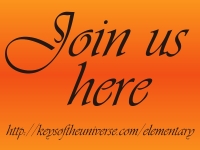Montessori – Cultural Studies
I receive questions from time to time about two subjects in particular:
Culture and Peace Education
The fact is that AMI integrates those aspects into the whole experience without creating arbitrary lessons.
Peace education:
When a child has his own needs fulfilled, he is at peace – and can share that peace.
Key experiences in primary:
Language: conversations, good literature (with good moral lessons)
Exercises of Practical Life: preparing the materials for the next person, always finding the materials prepared for oneself; care of self, care of the environment; GRACE AND COURTESY
Sensorial: Keys to the world – for exploration, real life experiences, language for those experiences – if the child can express himself and truly experience the world using all of his senses, he will be internally fulfilled, able to express himself accurately and assist in peaceful relations with others.
Mathematics: a language onto itself and (the way it is presented in the Montessori environment) developmentally appropriate and constructive, so that the child has further internal fulfillment and confidence. His mind continues to develop, along with his emotional development with this confidence. Much of math is also communal in nature – so the children are having real life experiences working with each other on a variety of topics, cooperating, disagreeing, coming to agreements, etc.
These experiences continue into elementary and into adolescence. We also add in the Great Lessons, developing appreciation for people before us, responsibility for those who come after us and a desire for cooperation with those people with us now.
Cultural Studies:
What comprises culture?
Anything that is more specific to a particular location or a group of people.
At primary we prepare the children for cultural studies through the globes and puzzle maps and climatic zones (so the children understand place and how ti affects people – geography is found in the sensorial and the language albums), through key art experiences (so they understand art techniques and tools used in other cultures – art is in the exercises of practical life album), through various exercises of practical life that start with their own culture and build into exploring other cultures.
Ongoing work includes art folders (exploring art of local cultures and further away cultures as well as over periods of time), studies of biomes, culture/continent folders (like the continent boxes we hear a lot about – but the objects are dispersed through the environment, while the folders hold 2-d images that invite discussion, stories, conversations and further exploration) — these are ALL in the primary language album.
In elementary, we add history which is entirely culture (history album), continued language studies across time and various places (language album), musical experiences (music album), economic geography section of the geography album, math and geometry history, and biology (continued biomes, ecology and classification of various plants and animals).
Separating those out? Again: arbitrary divisions of experiences that belong in language, geometry, geography, mathematics, music, history and biology. USE those subjects to explore the wide variety of options available – adding in more separate, distinct subjects only waters down the children’s experiences and stretches the adult VERY thin.
😉
By keeping the subjects grouped into as few as possible, the inter-connections between subjects are not only maintained but highly emphasized. Separating these subjects out creates arbitrary divisions that lead to much less depth of true study.

